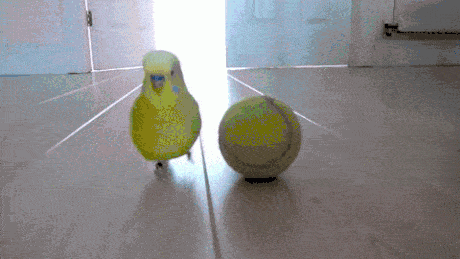Some of the very best essays published by Aeon during its brief but brilliant history have been penned by neuroscientist Michael Graziano. His latest is an ambitious thought experiment about machine intelligence, which pivots off his contention that “we’re close to understanding consciousness well enough to build it.”
In the course of just 3,100 words, he attempts to theoretically construct an artificial brain, one that could be conscious of a tennis ball without the aid of “magic,” because if a machine was able to truly comprehend this simple orb, robot recognition of all things is possible. I wholly agree with Graziano that consciousness is real and unrelated to pixie dust, though I’m not sure if his final step in the “build-a-brain” process is successful. Have to think more about that one. An excerpt:
Imagine a robot equipped with camera eyes. Let’s pick something mundane for it to look at – a tennis ball. If we can build a brain to be conscious of a tennis ball – just that – then we’ll have made the essential leap.
What information should be in our build-a-brain to start with? Clearly, information about the ball. Light enters the eye and is translated into signals. The brain processes those signals and builds up a description of the ball. Of course, I don’t mean literally a picture of a ball in the head. I mean the brain constructs information such as colour, shape, size and location. It constructs something like a dossier, a dataset that’s constantly revised as new signals come in. This is sometimes called an internal model.
In the real brain, an internal model is always inaccurate – it’s schematic – and that inaccuracy is important. It would be a waste of energy and computing resources for the brain to construct a detailed, scientifically accurate description of the ball. So it cuts corners. Colour is a good example of that. In reality, millions of wavelengths of light mix together in different combinations and reflect from different parts of the ball. The eyes and the brain, however, simplify that complexity into the property of colour. Colour is a construct of the brain. It’s a caricature, a proxy for reality, and it’s good enough for basic survival.
But the brain does more than construct a simplified model. It constructs vast numbers of models, and those models compete with each other for resources. The scene might be cluttered with tennis racquets, a few people, the trees in the distance – too many things for the brain to process in depth all at the same time. It needs to prioritise.
That focussing is called attention. I confess that I don’t like the word attention. It has too many colloquial connotations. What neuroscientists mean by attention is something specific, something mechanistic. A particular internal model in the brain wins the competition of the moment, suppresses its rivals, and dominates the brain’s outputs.
All of this gives a picture of how a normal brain processes the image of a tennis ball.•
Tags: Michael Graziano

